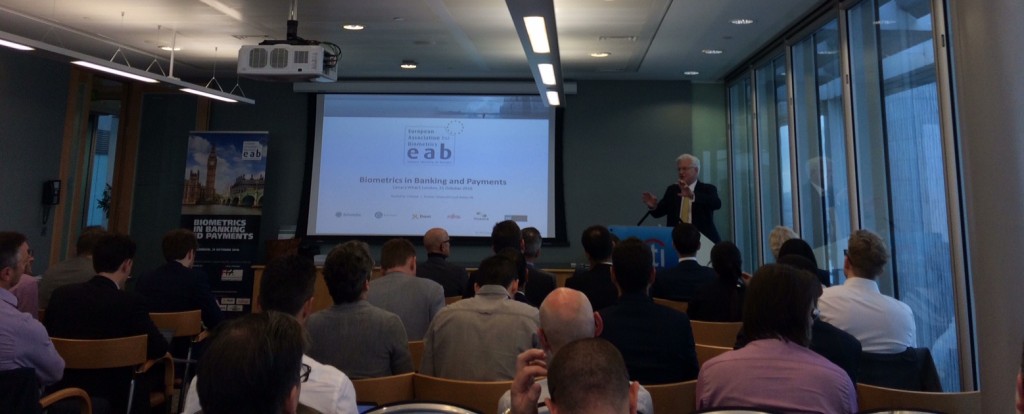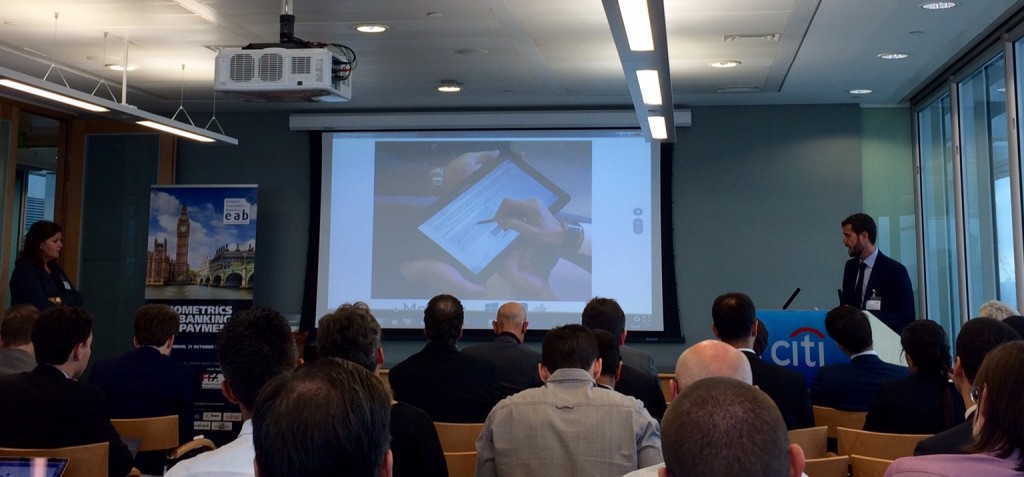European Association for Biometrics conference: exciting times ahead
European Association for Biometrics (EAB) has recently conducted a one-day seminar in London on what’s hot in the world of European banking biometrics.
The seminar was supported by Banking Technology and hosted by Citi. It gathered a good haul of UK banks, including Lloyds, Santander, Virgin Money, Tesco Bank, Metro Bank and RBS and TSB.
“Banking is a tough business these days,” Colin Church, CRO, EMEA at Citigroup, started his keynote speech. “But it is also a very interesting business – as now we are at a point in time that it’s pretty obvious it will be transformational around the technology we use in the next five to ten years.”
Security concerns
“Fundamental to that is a security consideration – and arguably it is one of the biggest constraints to the technology progression in banking. That is one of the biggest technology challenges,” Church stated.
No surprise, really. The recent events around the world with attacks on the Swift network have brought the security issue to the fore. As Swift chief executive, Gottfried Leibbrandt, stated: “the cyber threat is here to stay”.
But Church felt that the amount attacks would decrease as the industry brings to market and deploys the relevant technology and operations solutions.
Historically, it has been “a cat and mouse game” between the hackers and banks. And the attacks were nowhere near on the scale they are now. They were intercepted and shut down by the banks pretty quickly and efficiently in the past, Church recalled. The “bad guys” are a lot more organised now. And there are additional complexities with the political situation in various countries, regulatory sanctions and sophisticated, well-equipped and connected organisations behind the attacks – “there is a whole different set of issues now”.
It is critical we address these, he stated. “And biometrics is really at the front of these conversations.”
Fraud floored
Another major area that biometrics can and should address is fraud.
“It’s shocking how slowly this area has progressed – and how the control structure has not really evolved,” Church observed.
But one of the reasons is “a convenience issue” – particularly in the consumer space – and there will always be a trade-off between what a client wants and is willing to pay for and the risk a bank might take.
And with the lack of advanced technology – such as biometrics – the banks were prepared to suffer more losses to provide a customer with more convenience in the authentication/verification area.
Here is just one example of this “trade-off”: a bank the size of Citi suffers around $400-500 million in credit card fraud losses. And that’s an expected loss.
But as the new technology comes into play these losses could be lowered by as much as 20%, Church mused. “And that changes the economics of the business, and changes substantially what we ultimately charge our clients.”
Just sign on the dotted line… electronically
Spain-based Cecabank, a wholesale bank that specialises in treasury, securities services and banking services, did a presentation on its use e-signatures – a project it created together with the Autonomous University of Madrid (Universidad Autonoma de Madrid, UAM).
Cecabank, which is largely owned by the Spanish Confederation of Savings Banks (CECA, which accounts for 41% of the Spanish financial sector), embarked on the e-Biosignature initiative in 2014, with the UAM’s Biometric Recognition Group as its tech supplier.
UAM has used its extensive forensics expertise and technology to create a new e-signature customer ID and verification solution for Cecabank – which the latter now markets and sells to CECA members and other banks in Spain. e-Biosignature uses sophisticated forensics analysis tools – with the resultant e-signatures fully legally binding, said David Alonso, head of technology and innovation at Cecabank.
The bank has a contract with UAM until 2021, with the Biometric Recognition Group providing support, maintenance and development of the solution.
It has so far been rolled out to 55,000+ pads at 15,000+ branches across Cecabank and CECA members. It supports over 600 million signed operations annually and has been used by 15 million customers.
Why e-signatures of all the biometrics options? “Because writing is convenient, simple and instinctive,” Alonso explained. Other forms of biometrics identification and verification can be perceived as intrusive, uncomfortable and not straightforward. “But give anyone – a child or an adult – pen and paper and they’ll start writing, drawing and doodling, without even thinking about it.”
Who’s showcasing what
The conference was not short of vendors keen to present their biometrics solutions to address the banks’ woes. Presenters included Onegini, BiotrustID, Equiniti, BehavioSec, Daon, Fujitsu and Nuance Communications.
Put all together, they probably formed an end-to-end lifecycle of identity management with biometrics of all kinds: fingerprints, facial recognition, voice, signatures, iris scans etc.
We will not subject our readers to any vendor pitches, but here are some interesting stats from Equiniti about customer perception of biometrics:
- 80% of customers prefer biometrics over passwords;
- biometrics gets 96% in average consumer rating on verification experience;
- biometrics gets 96% in average consumer rating on enrolment experience;
- biometrics (authentication) has a 30-40% ease of doing business impact on the net promoter score (NPS).
“Offering biometrics to customers makes users view the corporation as overwhelmingly more innovative,” Equiniti’s business development manager, Brian Fitzpatrick, concluded.
Want to know more about biometrics and biometric security pros and cons? Read our guest post by Tom Blacksell, Experian: Biometrics – the road less travelled on the customer journey













































